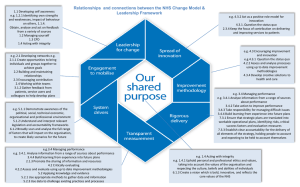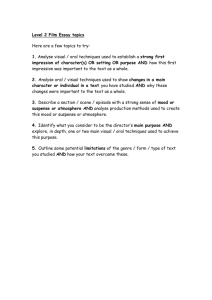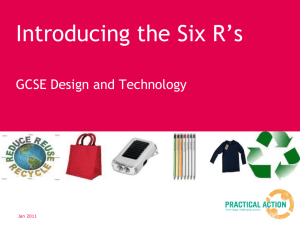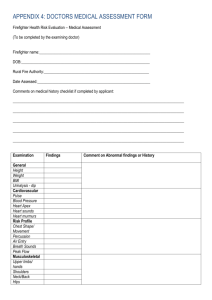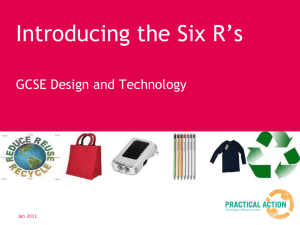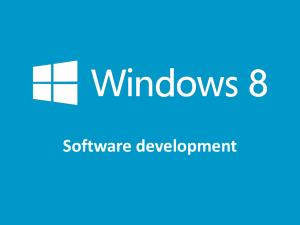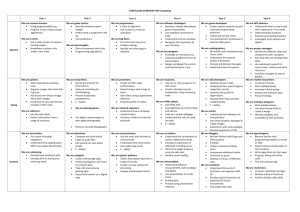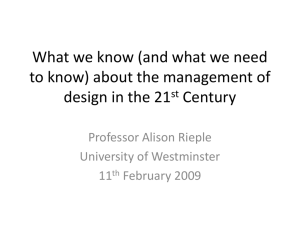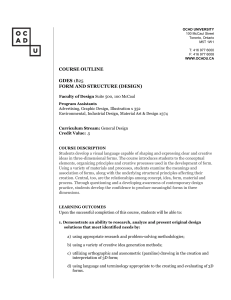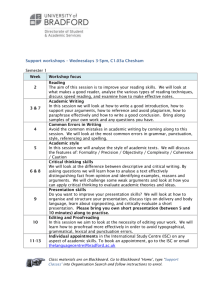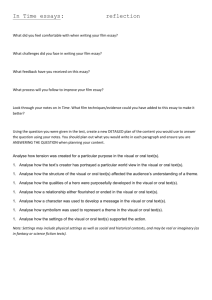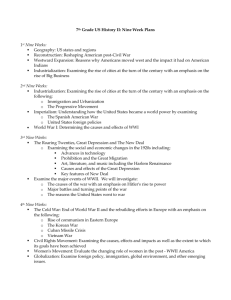Product Evaluation
advertisement
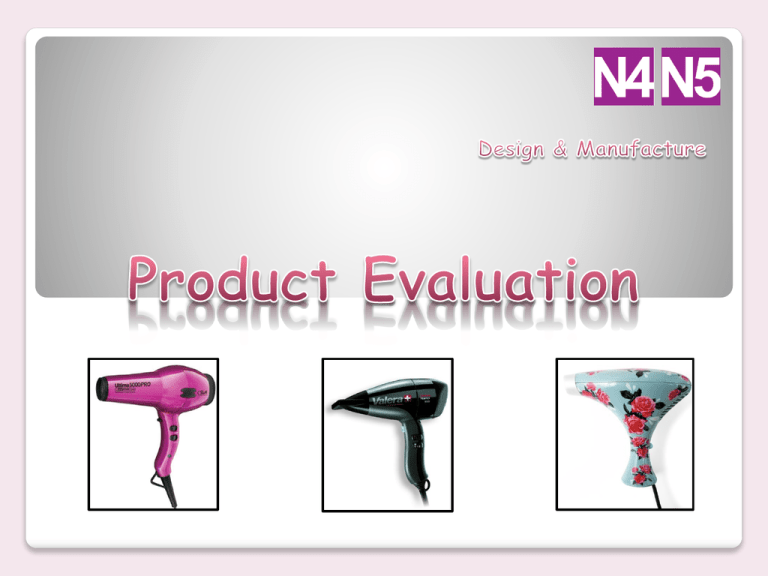
What is Product evaluation? You are a consumer when you buy or use a product. As a consumer you have choices. Evaluation of a product means that you are checking its suitability, safety and design; to decide whether it does the job it was intended to do- that it meets the needs of the users. It is important that you, the designer, are able to identify the features of a product that makes it either a success or a failure. Why do we Evaluate products that are already on the market? When designers are trying to design new products to put on the market, it is very important for them to look at other products that already exist. By analysing current products, designers can develop and improve these products and learn lessons from earlier mistakes or design faults to make their designs better. How do we Evaluate Existing Products? There are a number of ways to evaluate existing products: • User Trails - where a group of users test/trail versions of products under controlled conditions and give their opinions on the products. •Focus groups - Small number of people (usually between 4 and 15, but typically 8) brought together with a moderator to focus on/discuss a specific product. •Questionnaires – a list of research or survey questions asked to a larger group of people, designed to extract specific information. •Examining the product (Observation) – by examining the product in detail, you can find out about: its construction, the materials and processes used in its manufacture and how it has been assembled. •Comparison to other Products – looking at similar commercial products can highlight what is well designed about the product that you are evaluating. If you use this method, you need to ensure that the products you compare are similar and they are all tested against the same criteria. How do we Evaluate Existing Products? Things that can be discussed when evaluating existing products: • Function – Primary and Secondary functions, is the product fit for purpose. •Performance – Is the product easily maintained, is it good/bad for the environment, does it use quality materials is it difficult/expensive to produce? •Market – Is this product what consumers are looking for, does it meet social expectations, does it have a niche market? •Aesthetics – factors that affect the way the product looks. •Ergonomics – Anthropometrics (Human Sizes), Psychology, Physiology. •Economics – Cost, safety, British Standards, value for money. Your Task You are going to be selecting an existing product of your own choice (no mobile phones/laptops/tablets etc) to evaluate and analyse. Good products are things like tin openers, tweezers, salad tongs, cork screws, tea pots, hair brushes, toothbrushes, nail clippers etc. Things that you use everyday that have one or two specific functions If you cannot choose an item before the next lesson you will have your product chosen for you out of the schools’ own collection of items. Your Task Once you have selected a product you will use the information given to you over the future lessons to evaluate and analyse your chosen product. After you have collected all of the information you require you are going to produce a presentation/report on your findings on your evaluation of your product. You will present your finding in the form of a written report. Your class teacher will give you a guide to help with the written report. The report will cover outcome 3 of the Design unit and national 4/5.

